The Mermaid of Moher (The Merrow)
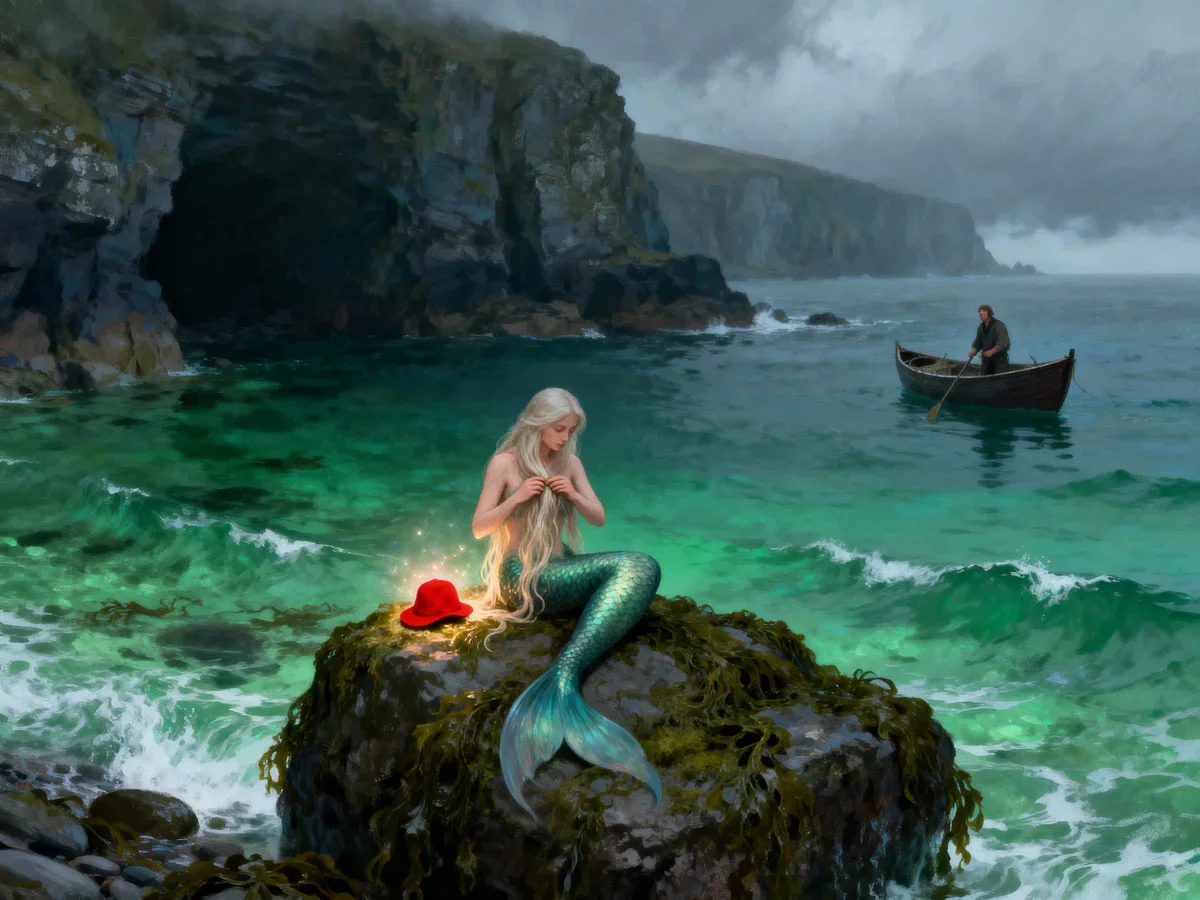
The Story: The Fisherman and the Merrow
On the wild coast of Clare, where the Cliffs of Moher meet the sea, there lived a fisherman. He was a good man, but his life was a lonely one, marked by the vast, empty expanse of the Atlantic and a cottage that was too quiet. One evening, after a storm had passed and the sea was as calm and green as glass, he was securing his currach in a hidden cove when he saw her.
She was a merrow (from the Irish murúch), a mermaid of the ancient Irish race. She sat on a seaweed-slicked rock, combing her long, dark hair, which shone like polished jet. Her beauty was not entirely human; it was wilder, more profound, like the beauty of the deep ocean itself. Lying on the rock beside her was her cochaillín draíochta, a small cap of deep red, which held all her power and was her only means of returning to her kingdom beneath the waves.
The fisherman was mesmerised. A powerful, desperate longing filled his lonely heart—a desire to capture this impossible beauty and bring light to his empty life. Moving as silently as the mist, he crept across the rocks, snatched the red cap, and concealed it beneath his coat. When the merrow turned to leave, she found her cap was gone. A terrible cry of panic and despair echoed around the cove. She was trapped, exiled from her home, powerless on the dry land.
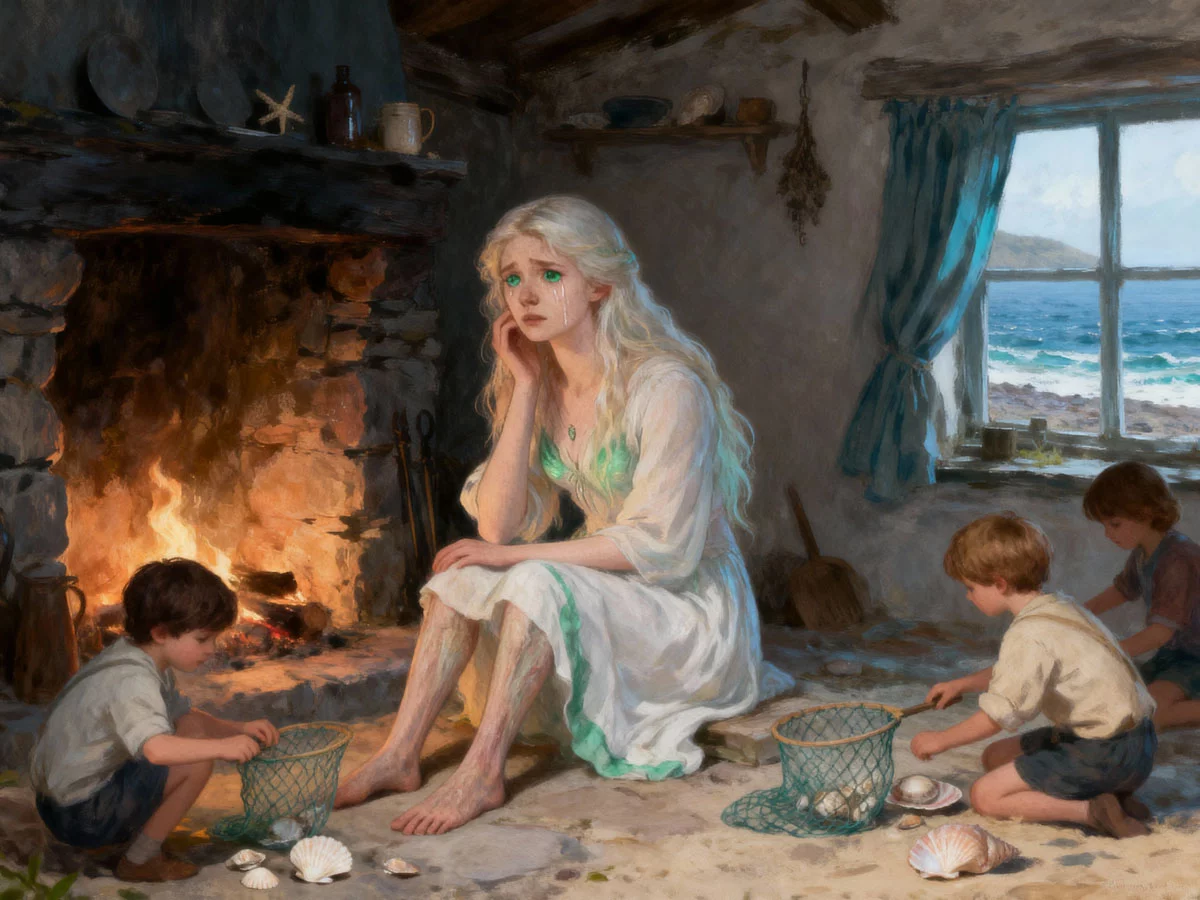
The fisherman approached her, feigning innocence. He offered her comfort, shelter, and his own rough coat against the cold air. With no other choice, she went with him to his small cottage. In time, the fisherman’s kindness won her over, and she consented to be his wife. She was a good wife, and they had beautiful children with their mother’s dark hair and eyes the colour of the deep sea.
But she was never truly happy. A profound melancholy always shadowed her beautiful face. She would spend hours staring out at the sea, a silent, heartbreaking longing in her gaze. She loved her husband and her children, but her soul ached for her true home, for the salt and the silence of the world beneath the waves. The land was a prison, no matter how lovingly it was decorated.
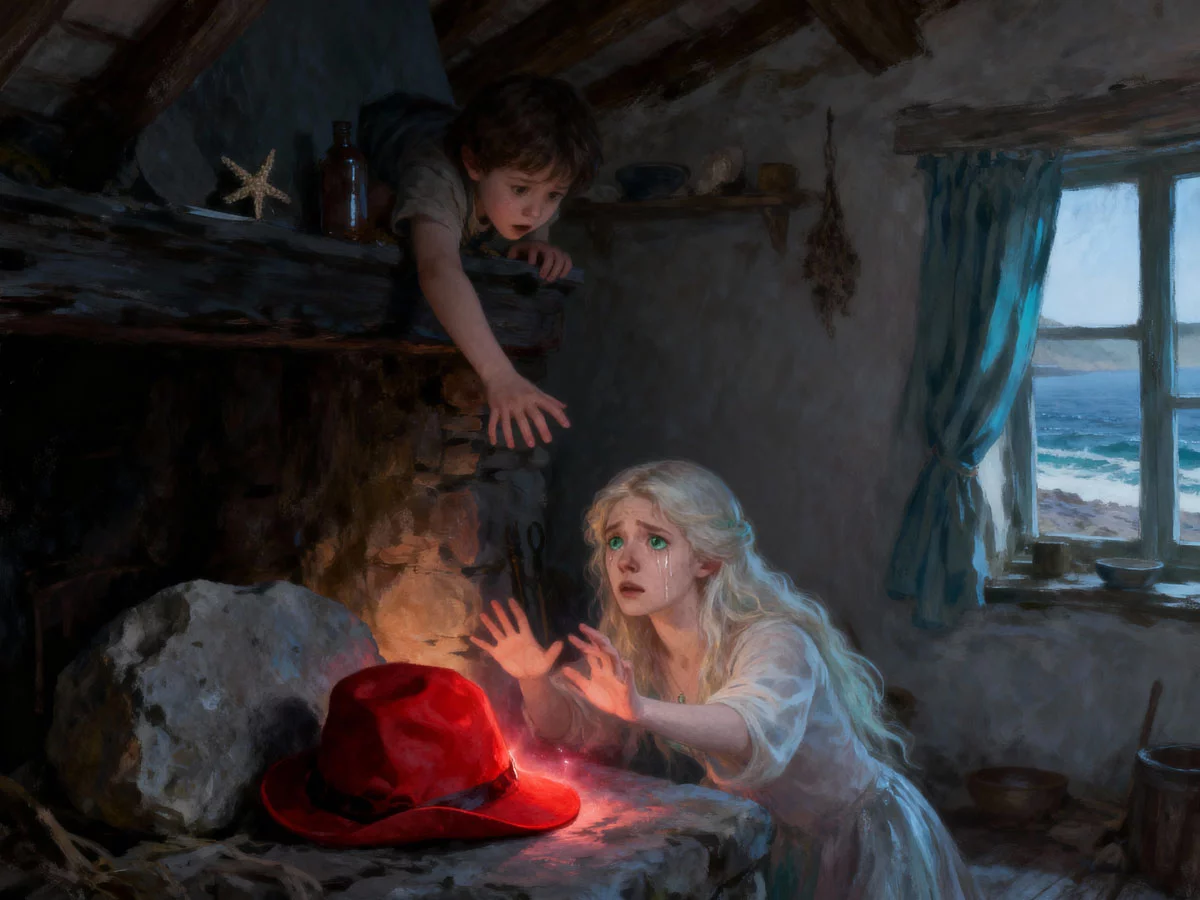
Years passed. One day, when the fisherman was out at sea, one of their children was playing in the rafters of the cottage, a place for storing old nets and forgotten things. There, tucked away behind a loose stone, the child found a small, strange cap of a beautiful, deep red. Delighted with this new toy, the child brought it to their mother.
The moment the merrow’s fingers touched the long-lost cochaillín draíochta, everything changed. The magic of the sea surged through her, and the call of her people, a song she had heard only in her dreams for years, was now a deafening, irresistible command.
With a sob that tore her in two, she clutched her children in one last, desperate embrace. The love for them was a terrible pain, but the pull of her own nature, her very essence, was stronger. She ran from the cottage to the edge of the shore. Without a moment's hesitation, she pulled the red cap onto her head and dived into the churning surf.
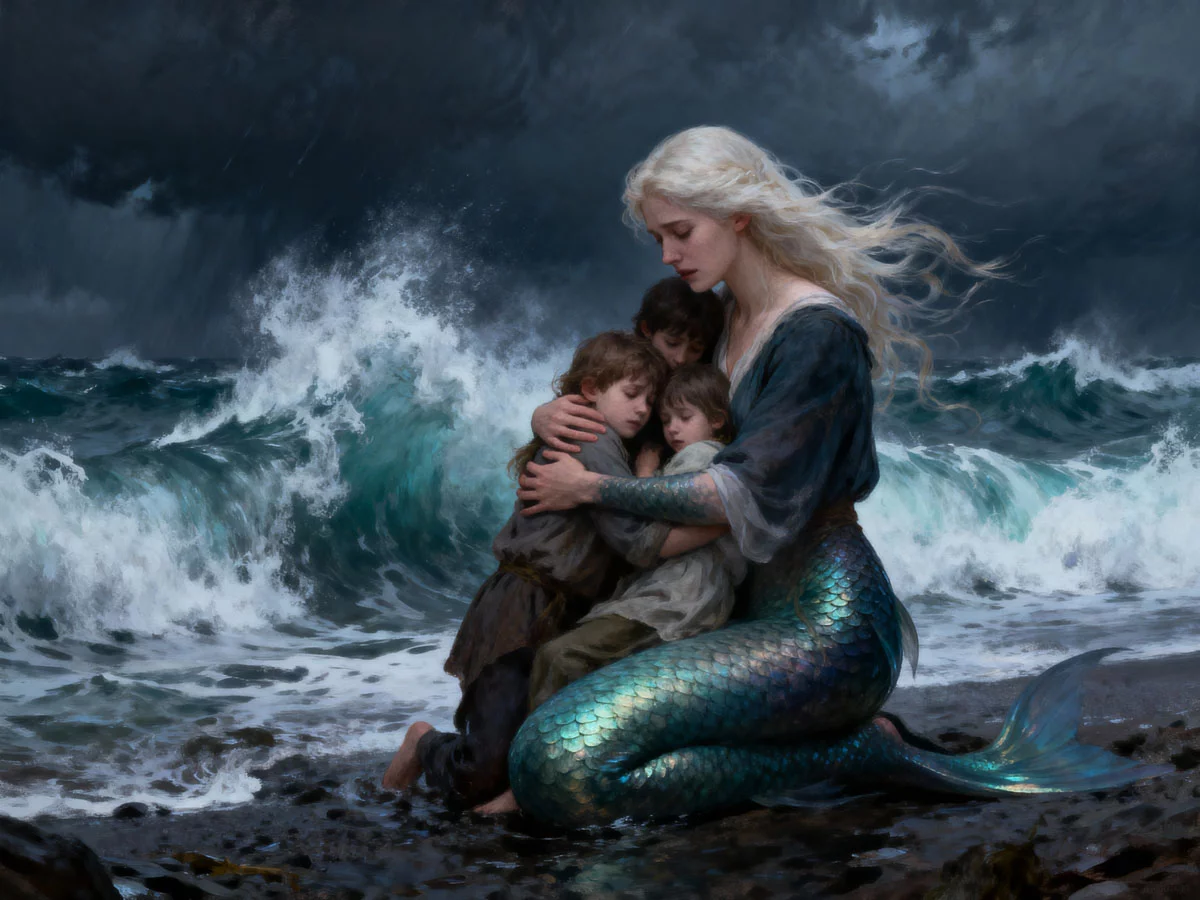
Her husband, returning in his boat, saw the commotion. He saw his children weeping on the shore, and then he saw her, a sleek form far out in the waves. She turned to him one last time, a figure of untamable, heartbreaking beauty, before she disappeared beneath the surface forever. He was left with an empty home, two half-human children, and the crushing knowledge that you can never truly hold the sea in your hands.
Analysis: The Untamable Wild
This haunting story is a classic example of the "Otherworldly Bride" archetype, a powerful and recurring theme in the folklore of maritime peoples.
The Stolen Totem: The core of the myth is the theft of a magical item—the merrow's cap or, in similar Scottish selkie (seal-folk) legends, a sealskin. This object is her key to transformation and her connection to her supernatural home. By stealing it, the mortal man traps her between worlds, forcing her into his own. This act represents humanity's desire to possess and control the beauty and mystery of the natural world.
A Metaphor for the Sea: The merrow herself is a personification of the sea. She is beautiful, captivating, and capable of giving life (children), but she is also fundamentally wild, untamable, and belongs to a world apart from our own. Her marriage is an allegory for humanity's relationship with the ocean. We can live alongside it, draw sustenance from it, and love its beauty, but we can never truly domesticate it. Its nature is its own, and it will always, eventually, return to itself.
A Tragedy of Exile: From the merrow's point of view, the story is a profound tragedy of exile and forced assimilation. Despite finding love of a kind, she lives in a state of constant, sorrowful longing (cianalas). The legend explores themes of homesickness and the pain of being separated from one's essential nature. Her ultimate choice is not a rejection of her human family, but an affirmation of her own identity, a desperate and necessary return to self.
Shared Celtic/Norse-Gaelic Roots: The strong parallels between the Irish merrow and the Scottish selkie legends highlight a shared folkloric heritage among the maritime communities of Ireland and Scotland. These stories were born from a deep, intimate, and respectful relationship with the sea and its creatures, especially the soulful, human-like seal, which was often believed to be a magical being in disguise.
More Folklore
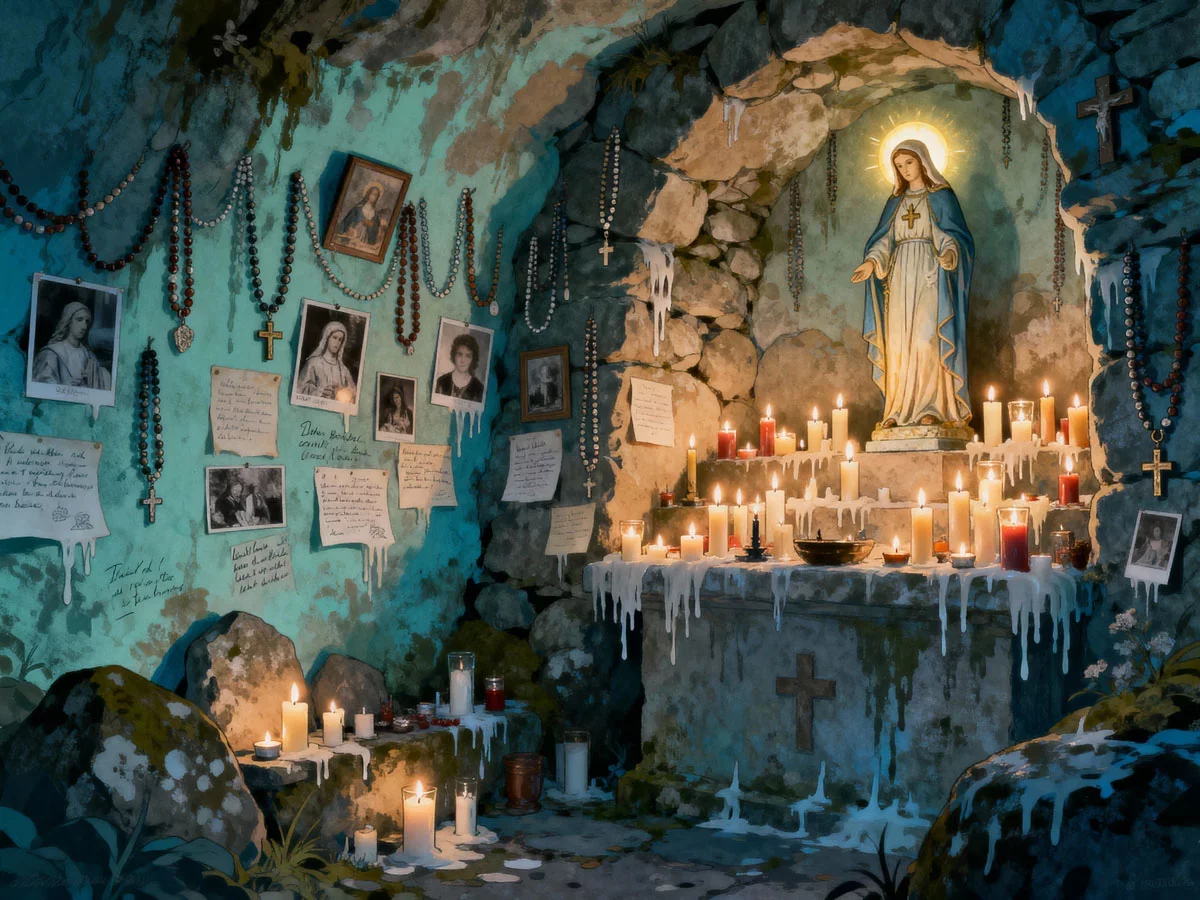
Healing Waters of St Brigid’s Well
Pilgrims perform “rounds” and leave offerings at this sacred grotto, whose spring is believed to cure ailments. The tradition blends ancient Celtic well-worship of the goddess Brigid with veneration of the Christian St. Brigid.
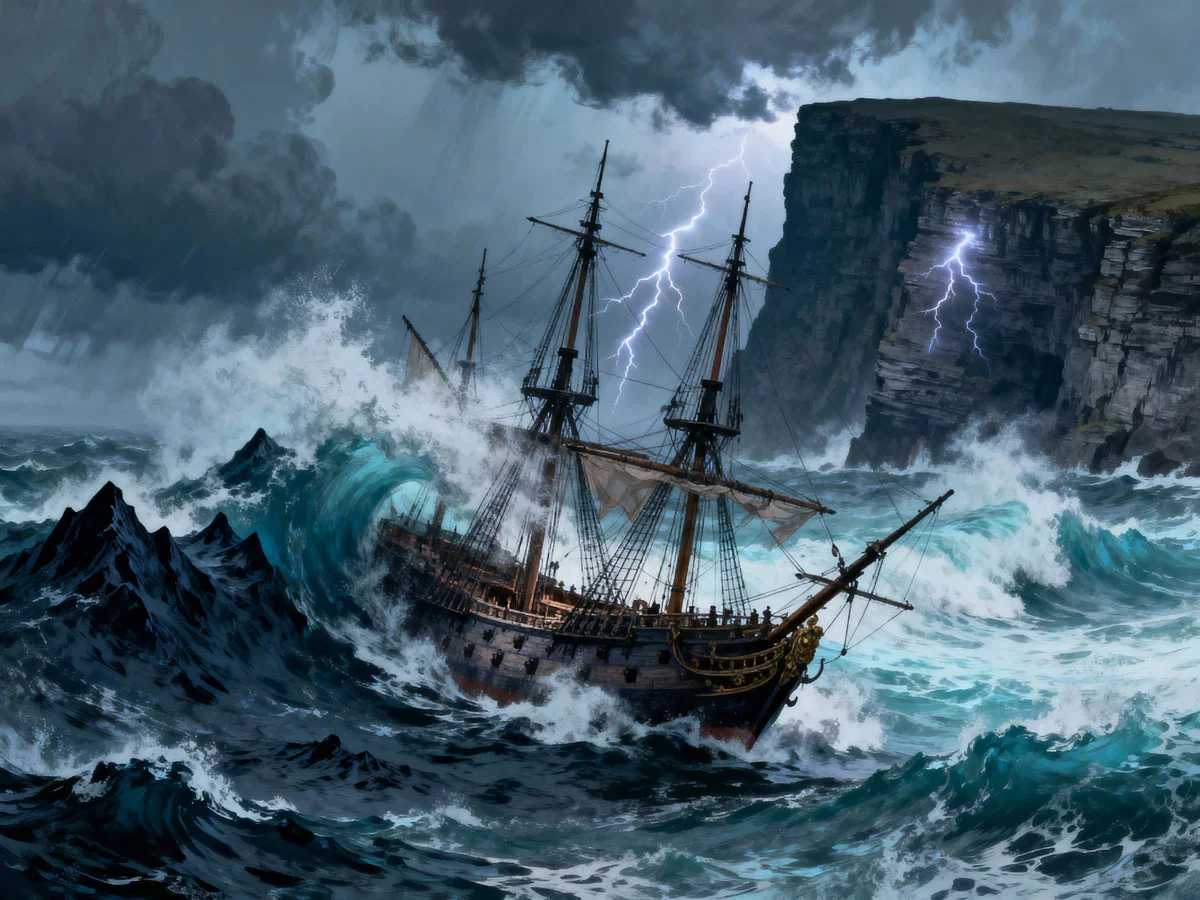
Spanish Armada Ghost Ships
The ghosts of several Spanish Armada galleons, wrecked in a great storm in 1588, are said to haunt Liscannor Bay. Locals speak of phantom masts seen on stormy nights and the lure of sunken treasure still guarded by the drowned sailors.